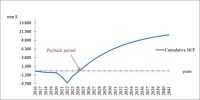Criticism of Profit Maximization
Profit Maximization is a procedure that companies undergo to find out the best output and price levels in order to maximize its return. It is assumed to be the dominant goal of a typical firm. It refers to the sales level where profits are highest. The profit maximization criterion has been questioned and criticized several grounds. The main technical flaws of this criterion are –
(1) Ambiguity – The term profit is a vague and ambiguous concept. It has no precise connotation. It is amenable to different interpretation by different people. To illustrate, profit may be short term or long term, it may be total profit or rate of profit and it may be before tax or after tax and so on. A loose expression like profit cannot form the basis of an operational criterion for financial management.
(2) The timing of Benefits – A more important technical objection to profit maximization is that it ignores the differences in the time pattern of the benefits received from investment proposals or future courses of actions. Because the firm can earn return funds it receives, the receipt of funds sooner rather than later it preferred. The profit maximization criterion does not consider the distinction between returns received in different time periods and treats all benefits irrespective of the timing as equally valuable.
The total profits associated with the alternatives A, B are identical. If the profit maximization is the decision criterion, both the alternatives would be ranked equally. But alternative A provides higher returns in earlier years, the returns from alternative B are larger in later years. As a result, the two alternatives courses of action are not strictly identical.
(3) Quality of Benefits: The critics of profit maximization objective argue that it ignores the risk associated with a stream of the cash flow of the project. For example, the total profit from the two projects may be the same but the profit from one project may be fluctuating widely than the profit from the other project. The firm with wider fluctuation in profit is riskier. This fact is ignored by the profit maximization objective.
Quality of benefit means the degree of risks and uncertainty associated with the benefit. Profit maximization approach does not consider the risk and uncertainty which is one of the most important principles of business finance.















